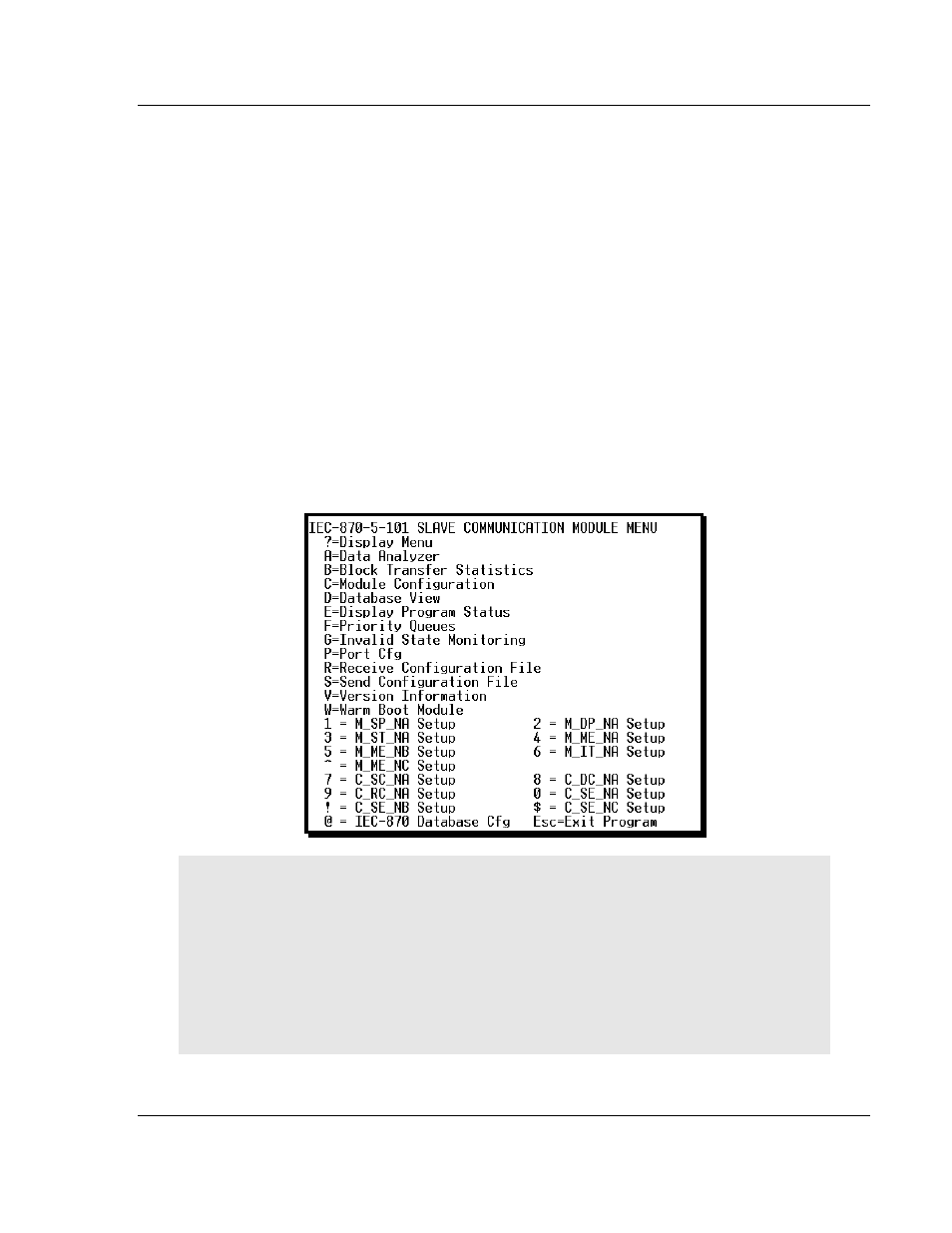ProSoft Technology MVI56-101S User Manual
Page 81

MVI56-101S ♦ ControlLogix Platform
Diagnostics and Troubleshooting
IEC 60870-5-101 Slave Communication Module
User Manual
ProSoft Technology, Inc.
Page 81 of 193
August 2, 2011
Keystrokes
The keyboard commands on these menus are usually not case sensitive. You
can enter most commands in lowercase or uppercase letters.
The menus use a few special characters (?,
-,
+,
@) that must be entered exactly
as shown. Some of these characters will require you to use the SHIFT,
CTRL, or
ALT
keys to enter them correctly. For example, on US English keyboards, enter
the ?
command as SHIFT
and /.
Also, take care to distinguish the different uses for uppercase letter "eye" (I),
lowercase letter "el" (
L
),
and the number one (1). Likewise, uppercase letter "oh"
(O)
and the number zero (0)
are not interchangeable. Although these characters
look alike on the screen, they perform different actions on the module and may
not be used interchangeably.
4.1.2 Main
Menu
When you first connect to the module from your computer, your terminal screen
will be blank. To activate the main menu, press the [?] key on your computer’s
keyboard. If the module is connected properly, the following menu will appear.
Caution: Some of the commands available to you from this menu are designed for advanced
debugging and system testing only, and can cause the module to stop communicating with the
processor or with other devices, resulting in potential data loss or other communication failures.
Use these commands only if you fully understand their potential effects, or if you are specifically
directed to do so by ProSoft Technology Technical Support Engineers.
There may be some special command keys that are not listed on the menu but that may activate
additional diagnostic or debugging features. If you need these functions, you will be advised how to
use them by Technical Support. Please be careful when pressing keys so that you do not
accidentally execute an unwanted command.